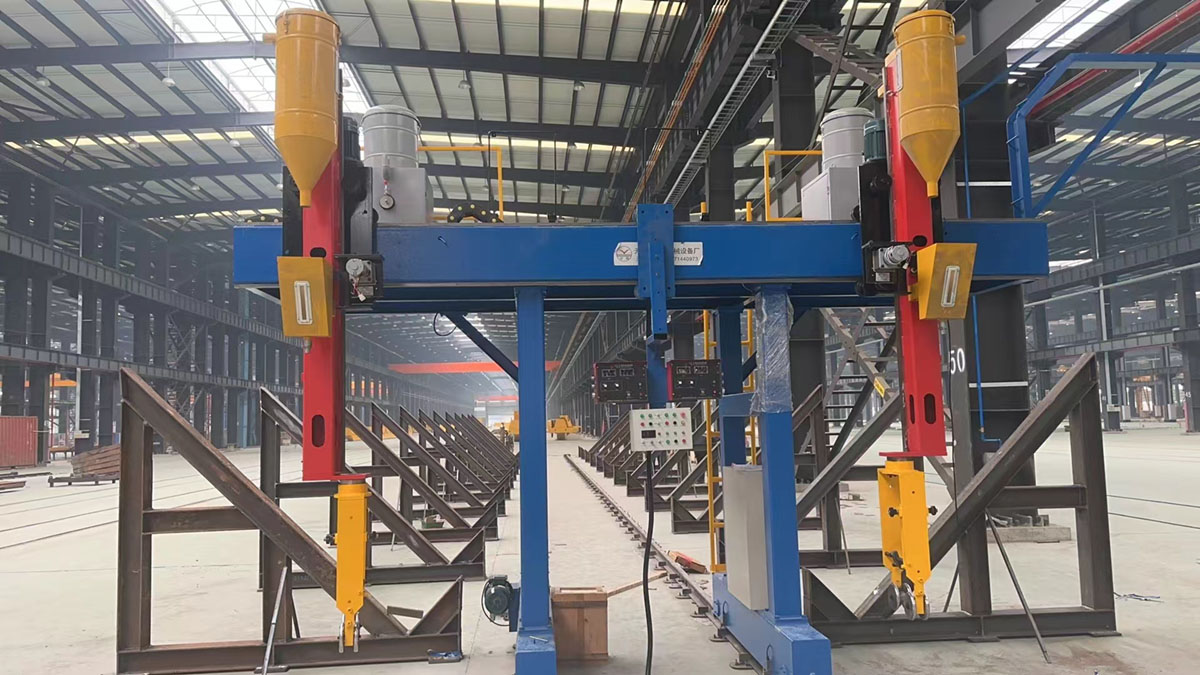In the ever-evolving construction industry, the demand for high-quality building materials has surged, driven by the need for faster, more efficient, and sustainable construction practices. Among the various materials used in construction, H beams have gained significant popularity due to their strength, durability, and versatility. The H beam production line plays a crucial role in meeting this demand, enhancing productivity, and ensuring the quality of building materials.

Understanding H Beams
H beams, also known as wide flange beams, are structural steel beams that have a cross-section resembling the letter “H.” They are widely used in construction for their ability to support heavy loads while minimizing material usage. H beams are commonly employed in the construction of bridges, buildings, and other structures where strength and stability are paramount. Their design allows for efficient load distribution, making them an ideal choice for various applications.
The Importance of H Beam Production Lines
The production of H beams involves several stages, including cutting, welding, and finishing. An H beam production line is a specialized setup that automates these processes, ensuring consistency, precision, and efficiency. The importance of H beam production lines can be summarized in the following key points:
1. Enhanced Efficiency
One of the primary advantages of an H beam production line is its ability to streamline the manufacturing process. Automation reduces the time required for each stage of production, allowing manufacturers to produce a higher volume of H beams in a shorter period. This increased efficiency is crucial in meeting the growing demand for building materials in the construction sector.
2. Improved Quality Control
Quality is paramount in the construction industry, where the safety and longevity of structures depend on the materials used. H beam production lines are equipped with advanced technology that ensures precise measurements and consistent quality throughout the production process. Automated systems can detect defects and irregularities, allowing for immediate corrections and minimizing waste.
3. Cost-Effectiveness
By optimizing the production process, H beam production lines can significantly reduce manufacturing costs. Automation minimizes labor costs and reduces the likelihood of errors that can lead to costly rework. Additionally, the efficient use of raw materials in the production process contributes to overall cost savings, making H beams a more economical choice for builders and contractors.
4. Flexibility and Customization
Modern H beam production lines are designed to accommodate a variety of specifications and sizes. This flexibility allows manufacturers to produce H beams tailored to specific project requirements, whether for residential buildings, commercial structures, or industrial applications. Customization options enable builders to meet unique design needs while maintaining structural integrity.
5. Sustainability
As the construction industry increasingly focuses on sustainability, H beam production lines contribute to eco-friendly practices. The efficient use of materials and energy in the production process reduces waste and lowers the carbon footprint associated with manufacturing. Additionally, H beams themselves are recyclable, further enhancing their sustainability profile.
The Components of an H Beam Production Line
An H beam production line consists of several key components, each playing a vital role in the manufacturing process:
1. Raw Material Preparation
The production process begins with the preparation of raw materials, typically steel plates. These plates are cut to the required dimensions and inspected for quality before being fed into the production line.
2. Cutting and Shaping
The next stage involves cutting the steel plates into the desired shapes for the H beam. This process may include plasma cutting, laser cutting, or flame cutting, depending on the technology used in the production line. The precision of this stage is critical, as it determines the overall quality of the finished product.
3. Welding
Once the plates are cut, they are assembled and welded together to form the H beam structure. Automated welding machines ensure consistent weld quality and strength, which are essential for the structural integrity of the beams.
4. Finishing
After welding, the H beams undergo finishing processes, which may include grinding, painting, or galvanizing. These processes enhance the appearance of the beams and provide additional protection against corrosion and environmental factors.
5. Quality Inspection
Before the H beams are dispatched for use in construction projects, they undergo rigorous quality inspections. Automated systems and skilled personnel check for dimensional accuracy, weld quality, and surface finish to ensure that the beams meet industry standards.
The Future of H Beam Production Lines
As technology continues to advance, the future of H beam production lines looks promising. Innovations such as artificial intelligence, machine learning, and the Internet of Things (IoT) are expected to further enhance the efficiency and quality of H beam production. Smart production lines that can monitor performance in real-time and make adjustments on the fly will likely become the norm.
Additionally, the growing emphasis on sustainability will drive the development of more eco-friendly production methods. Manufacturers will increasingly seek ways to reduce energy consumption, minimize waste, and utilize recycled materials in the production of H beams.
Conclusion
The H beam production line is a vital component of the construction industry, significantly improving the productivity and quality of building materials. By enhancing efficiency, ensuring quality control, and promoting cost-effectiveness, these production lines play a crucial role in meeting the demands of modern construction. As technology continues to evolve, the future of Resize Machinery H beam production lines promises even greater advancements, paving the way for a more sustainable and efficient construction industry. The continued investment in H beam production technology will undoubtedly contribute to the development of safer, more durable structures that meet the needs of a growing population.
https://www.resizeglobal.com/improving-the-productivity-of-building-materials.html
www.resizeglobal.com
Resize welding machinery
